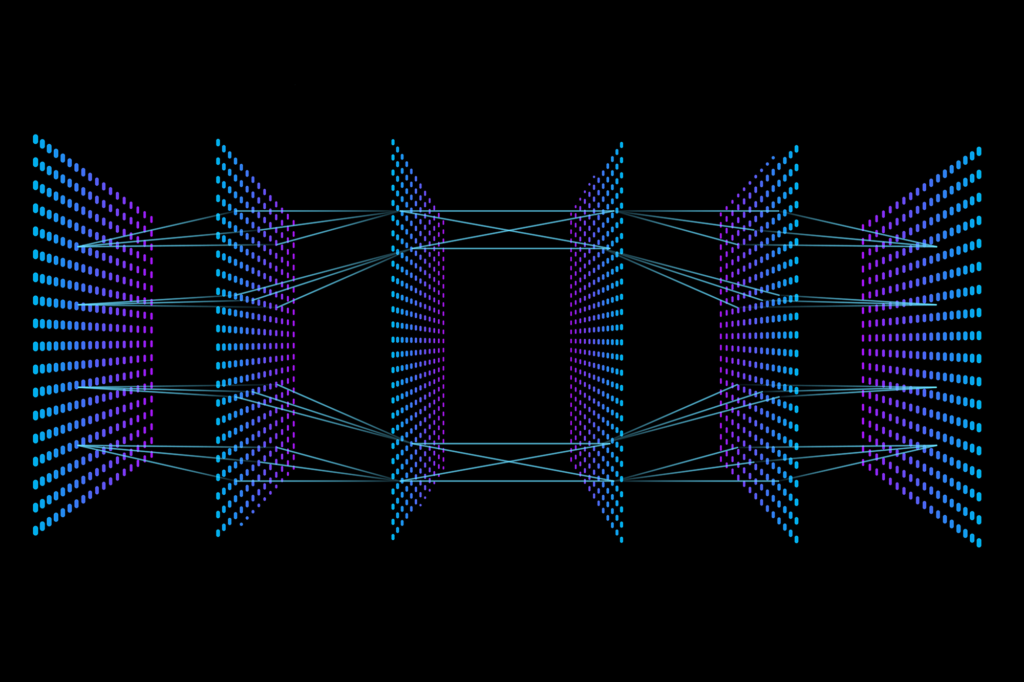A New Kind of Sensing and Perception to Accelerate Autonomy at Scale
Scale unlocks the future of autonomy
Today’s autonomous mobility solutions are built around a 20-year-old hardware-centric architecture that doesn’t scale, which is why progress has been incremental at best. When we make scalability a core requirement of every part of the solution, autonomy will take a giant leap forward.

Human-like perception unlocks scale

Autonomy today is focused on sensors that don’t comprehend complex contexts, evolving semantic relationships, or unexpected situations. To unlock autonomy at scale, autonomous mobility solutions require human-like awareness — where sensing and perception are one and the same.
Computational sensing unlocks perception
Instead of relying on more and more complex and expensive sensing hardware, treating sensing computationally turns it into a mathematical problem we can solve with ever-improving algorithms. This approach fundamentally changes the design, development, and business models for autonomous sensing and perception.

Perceptive unlocks the future of autonomy

Perceptive is pioneering the first intelligent autonomy solution that connects sensing and perception through a scalable architecture. Our computational approach integrates hardware and software and gives autonomy developers a proven path for accelerating the progress of mobility.
A New Way. A Better Way.
For humans, sensing and perception are one and the same. Our sensory inputs (sight, sound, touch, smell) carry embedded meanings. Yet today, the consensus is that achieving broadly deployable autonomy simply requires more — and more powerful — sensors. The assumption is that with higher resolution, we will magically arrive at a level of perception that permits solutions to scale. But this expensive and deceptive approach will not get us to human-like perception required for scale.
At Perceptive, we believe the key to unlocking next-generation autonomy requires rethinking the sensing architecture from the ground up to make it function more like human perception. We’ve created a new model that does just that and will propel the industry forward.
You never change things by fighting the existing reality.
To change something, build a new model that makes the existing model obsolete.
- Computational
- Universal
- Perceptive
- Active

To sense is to compute.
Viewing sensing as a computational process unlocks new possibilities for algorithms to scale sensing. The world’s most advanced sensing systems (e.g., MRI machines, radio telescopes) use sophisticated algorithms that process raw signals directly from the hardware. But today’s autonomy sensors are based on hardware-centric processes and rudimentary software algorithms, which limit their ability to scale. By combining minimalistic, ultra-low-noise analog hardware with cutting-edge AI algorithms, Perceptive has created an approach where sensing can scale as it grows more powerful.

To sense is to abstract.
To sense is to imagine.
For humans, sensing and perception are one and the same, as there is no sensing without understanding. Perceptive’s Universal Sensing approach connects sensing and perception, bringing capabilities to autonomy that have been considered unique to the brain.

Inferential
Sensory inputs from our eyes, ears, or skin are fluid constructs, not undisputable givens; they are inferred rather than simply recorded. Like the brain, Perceptive learns the basic processes of sensing and brings AI inferences deep into sensing hardware.

Concurrent
Sensing and concluding that something is present is a difficult task for any sensor individually. Perceptive’s Universal Sensing architecture enables an entirely new software-defined hybrid modality: Concurrent Sensing. When no single modality could make a detection, Concurrent Sensing denoises and dramatically enhances confidence of detection (“signal imputation”) by processing all the raw sensing signals jointly.

Predictive
The brain plays a movie that keeps us one step ahead of reality, which saves us when we miss a word at a loud party or the vehicle in front of us disappears into the fog. For the first time in autonomy, Perceptive brings similar Predictive Processing capabilities to sensing and perception. Rather than inferring an after-the-fact model of the world, algorithms generate expectations and use them to evaluate, and if necessary adjust the sensory inputs. Predictive Processing represents the future of autonomy and robotics.

To sense is to experiment.
Our senses continuously interrogate the world like scientists seeking to confirm or cross out hypotheses with experiments. Perceptive brings this same approach to autonomy with Active Sensing, which tests an array of plausible hypotheses against incoming sensory data by modifying the sensing hardware’s configuration in real-time to interpret what’s present. Some things matter more than others, and Perceptive’s Active Sensing brings human-like attention, focus, and adaptability to perception.